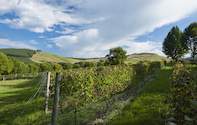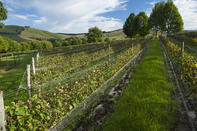New Flavours
It’s known that most of South Africa’s wine is produced in the Western Cape, but more recently, other provinces have joined the winemaking party in an attempt to diversify SA’s vino portfolio. The Western Cape will forever be the home of the grape, but the eastern coast of South Africa has now entered the race to become one of the country’s top wine regions.

The Eastern Cape is South Africa’s latest wine region. The warmer Indian ocean’s effect on the climate and ultimately the vineyard soil has halted wine production in the Eastern Cape, but that hasn’t stopped a few savvy winemakers that are eager to turn the east coast into a commercially successful wine region.
Vineyards were planted in the Amatola Mountains, which enjoys high temperatures and little to no humidity. Although the region is one of the most unforgiving on grapes due to late frost, hail and summer rainfall, grapes like Chardonnay, Merlot, Petit Verdot, Pinotage, Sauvignon Blanc and Shiraz are grown here with rigid management.
Midlands Wines

In the 2000s, KwaZulu-Natal became the ‘new’ winemaking hotspot; vineyards were planted in the Midlands area for a trial period, and cultivars like Cabernet Sauvignon, Merlot, Shiraz, Pinotage, Chardonnay and Sauvignon Blanc were tested. The summer rainfall climate of the area was favourable, but areas that experience severe hail, excessive summer temperatures and extreme winter cold and frost had to be avoided. Larger scale vineyards have now been planted in the Midlands, with specific management strategies to combat weather-related issues.
Grape growers from KZN have created successful enterprises based on trial and error - for instance, Chardonnay is not suited to the climate, so it’s not grown in the area. Sauvignon Blanc is harvested in February, while Cabernet Sauvignon is harvested in early April depending on altitude and the possibility of early frost. Gapes normally reach optimum sugar levels three to four weeks later in KZN than in the Western Cape.
Viticulture endeavours in the Midlands have resulted in the establishment of a number of wineries, who produce some of SA’s most unique wines, such as Mourvèdre, Nebido and Petit Verdot.